Investigation of Piezoelectric Ringing Frequency Response of Beta Barium Borate Crystals
Abstract
1. Introduction
2. Investigation Procedure
- 3 mm × 3 mm × 25 mm
- 4 mm × 4 mm × 25 mm
- 4 mm × 4 mm × 20 mm
3. Investigation Results
4. Discussion
Author Contributions
Funding
Conflicts of Interest
References
- Yu, T.; Gao, F.; Zhang, X.; Xiong, B.; Yuan, X. Bidirectional ring amplifier with twin pulses for high-power lasers. Opt. Express 2018, 26, 15300–15307. [Google Scholar] [CrossRef]
- Rezvani, S.A.; Suzuki, M.; Malevich, P.; Livache, C.; de Montgolfier, J.V.; Nomura, Y.; Tsurumachi, N.; Baltuška, A.; Fuji, T. Millijoule femtosecond pulses at 1937 nm from a diode-pumped ring cavity Tm:YAP regenerative amplifier. Opt. Express 2018, 26, 29460–29470. [Google Scholar] [CrossRef]
- Fattahi, H.; Alismail, A.; Wang, H.; Brons, J.; Pronin, O.; Buberl, T.; Vámos, L.; Arisholm, G.; Azzeer, A.M.; Krausz, F. High-power, 1-ps, all-Yb:YAG thin-disk regenerative amplifier. Opt. Lett. 2016, 41, 1126–1129. [Google Scholar] [CrossRef]
- Giesberts, M.; Fitzau, O.; Hoffmann, H.-D.; Lange, R.; Bachert, C.; Krause, V. Directly q-switched high power resonator based on XLMA-fibers. In Proceedings of the Fiber Lasers XV: Technology and Systems; International Society for Optics and Photonics, San Francisco, CA, USA, 26 February 2018; Volume 10512, p. 1051218. [Google Scholar] [CrossRef]
- Römer, G.R.B.E.; Bechtold, P. Electro-optic and Acousto-optic Laser Beam Scanners. Phys. Procedia 2014, 56, 29–39. [Google Scholar] [CrossRef]
- Sun, Z.; Martinez, A.; Wang, F. Optical modulators with 2D layered materials. Nat. Photonics 2016, 10, 227–238. [Google Scholar] [CrossRef]
- Munk, A.; Jungbluth, B.; Strotkamp, M.; Hoffmann, H.-D.; Poprawe, R.; Höffner, J. Diode-pumped Alexandrite ring laser for lidar applications. In Proceedings of the Solid State Lasers XXV: Technology and Devices; International Society for Optics and Photonics, San Francisco, CA, USA, 16 March 2016; Volume 9726, p. 97260I. [Google Scholar] [CrossRef]
- Eichler, H.J.; Eichler, J.; Lux, O. Modulation and Deflection. In Lasers: Basics, Advances and Applications; Eichler, H.J., Eichler, J., Lux, O., Eds.; Springer Series in Optical Sciences; Springer International Publishing: Cham, Switzerland, 2018; pp. 299–311. ISBN 978-3-319-99895-4. [Google Scholar] [CrossRef]
- Rashed, A.N.Z. Best candidate materials for fast speed response and high transmission performance efficiency of acousto optic modulators. Opt. Quantum Electron. 2014, 46, 731–750. [Google Scholar] [CrossRef]
- Zhang, F.; Tang, P.; Wu, M.; Huang, B.; Liu, J.; Qi, X.; Zhao, C. Voltage-on-Type RTP Pockels Cell for Q-switch of an Er:YAG Laser at 1,617 nm. J. Russ. Laser Res. 2017, 38, 339–343. [Google Scholar] [CrossRef]
- Bergmann, F.; Siebold, M.; Loeser, M.; Röser, F.; Albach, D.; Schramm, U. MHz Repetion Rate Yb:YAG and Yb:CaF2 Regenerative Picosecond Laser Amplifiers with a BBO Pockels Cell. Appl. Sci. 2015, 5, 761–769. [Google Scholar] [CrossRef]
- De Groote, R.P.; Budinčević, I.; Billowes, J.; Bissell, M.L.; Cocolios, T.E.; Farooq-Smith, G.J.; Fedosseev, V.N.; Flanagan, K.T.; Franchoo, S.; Garcia Ruiz, R.F.; et al. Use of a Continuous Wave Laser and Pockels Cell for Sensitive High-Resolution Collinear Resonance Ionization Spectroscopy. Phys. Rev. Lett. 2015, 115, 132501. [Google Scholar] [CrossRef]
- Donley, E.A.; Heavner, T.P.; Levi, F.; Tataw, M.O.; Jefferts, S.R. Double-pass acousto-optic modulator system. Rev. Sci. Instrum. 2005, 76, 063112. [Google Scholar] [CrossRef]
- Wu, Q.; Gao, Z.; Tian, X.; Su, X.; Li, G.; Sun, Y.; Xia, S.; He, J.; Tao, X. Biaxial crystal β-BaTeMo2O9: Theoretical analysis and the feasibility as high-efficiency acousto-optic Q-switch. Opt. Express 2017, 25, 24893–24900. [Google Scholar] [CrossRef]
- El-Sherif, A.F.; Harfosh, A. Comparison of high-power diode pumped actively Q-switched double-clad flower shape co-doped-Er3+:Yb3+fiber laser using acousto-optic and mechanical (optical) modulators. J. Mod. Opt. 2015, 62, 1229–1240. [Google Scholar] [CrossRef]
- Andreev, N.F.; Babin, A.A.; Davydov, V.S.; Matveev, A.Z.; Garanin, S.G.; Dolgopolov, Y.V.; Kulikov, S.M.; Sukharev, S.A.; Tyutin, S.V. Wide-aperture plasma-electrode pockels cell. Plasma Phys. Rep. 2011, 37, 1219–1224. [Google Scholar] [CrossRef]
- Zhang, C.; Feng, X.; Liang, S.; Zhang, C.; Li, C. Quasi-reciprocal reflective optical voltage sensor based on Pockels effect with digital closed-loop detection technique. Opt. Commun. 2010, 283, 3878–3883. [Google Scholar] [CrossRef]
- Dorrer, C. Analysis of nonlinear optical propagation in a longitudinal deuterated potassium dihydrogen phosphate Pockels cell. JOSA B 2014, 31, 1891–1900. [Google Scholar] [CrossRef]
- Li, C. Electrooptic Switcher Based on Dual Transverse Pockels Effect and Lithium Niobate Crystal. IEEE Photonics Technol. Lett. 2017, 29, 2159–2162. [Google Scholar] [CrossRef]
- Ionin, A.A.; Kinyaevskiy, I.O.; Klimachev, Y.M.; Kotkov, A.A.; Kozlov, A.Y.; Kryuchkov, D.S. Selection of CO laser single nanosecond pulse by electro-optic CdTe shutter. Infrared Phys. Technol. 2017, 85, 347–351. [Google Scholar] [CrossRef]
- Jiang, W.; Yatsui, K.; Takayama, K.; Akemoto, M.; Nakamura, E.; Shimizu, N.; Tokuchi, A.; Rukin, S.; Tarasenko, V.; Panchenko, A. Compact solid-State switched pulsed power and its applications. Proc. IEEE 2004, 92, 1180–1196. [Google Scholar] [CrossRef]
- Rutten, T.P.; Wild, N.; Veitch, P.J. Fast rise time, long pulse width, kilohertz repetition rate Q-switch driver. Rev. Sci. Instrum. 2007, 78, 073108. [Google Scholar] [CrossRef]
- Xu, Y.; Chen, W.; Liang, H.; Li, Y.-H.; Liang, F.-T.; Shen, Q.; Liao, S.-K.; Peng, C.-Z. Megahertz high voltage pulse generator suitable for capacitive load. AIP Adv. 2017, 7, 115210. [Google Scholar] [CrossRef]
- Baker, R.J.; Johnson, B.P. Series operation of power MOSFETs for high-speed, high-voltage switching applications. Rev. Sci. Instrum. 1993, 64, 1655–1656. [Google Scholar] [CrossRef]
- Jiang, W. Fast High Voltage Switching Using Stacked MOSFETs. IEEE Trans. Dielectr. Electr. Insul. 2007, 14, 947–950. [Google Scholar] [CrossRef]
- Sundararajan, R.; Shao, J.; Soundarajan, E.; Gonzales, J.; Chaney, A. Performance of solid-state high-voltage pulsers for biological applications-a preliminary study. IEEE Trans. Plasma Sci. 2004, 32, 2017–2025. [Google Scholar] [CrossRef]
- Keith, W.D.; Pringle, D.; Rice, P.; Birke, P.V. Distributed magnetic coupling synchronizes a stacked 25-kV MOSFET switch. IEEE Trans. Power Electron. 2000, 15, 58–61. [Google Scholar] [CrossRef]
- Krishnaswamy, P.; Kuthi, A.; Vernier, P.T.; Gundersen, M.A. Compact Subnanosecond Pulse Generator Using Avalanche Transistors for Cell Electroperturbation Studies. IEEE Trans. Dielectr. Electr. Insul. 2007, 14, 873–877. [Google Scholar] [CrossRef]
- Xuelin, Y.; Hongde, Z.; Yang, B.; Zhenjie, D.; Qingsong, H.; Bo, Z.; Long, H. 4kV/30kHz short pulse generator based on time-domain power combining. In Proceedings of the 2010 IEEE International Conference on Ultra-Wideband, Nanjing, China, 20–23 September 2010; Volume 2, pp. 1–4. [Google Scholar] [CrossRef]
- Oak, S.M.; Bindra, K.S.; Narayan, B.S.; Khardekar, R.K. A fast cavity dumper for a picosecond glass laser. Rev. Sci. Instrum. 1991, 62, 308–312. [Google Scholar] [CrossRef]
- Tamuri, A.; Bidin, N.; Mad Daud, Y. Nanoseconds Switching for High Voltage Circuit using Avalanche Transistors. Appl. Phys. Res. 2009, 1. [Google Scholar] [CrossRef]
- Rai, V.N.; Shukla, M.; Khardekar, R.K. A transistorized Marx bank circuit providing sub-nanosecond high-voltage pulses. Meas. Sci. Technol. 1994, 5, 447. [Google Scholar] [CrossRef]
- Dharmadhikari, A.K.; Dharmadhikari, J.A.; Adhi, K.P.; Mehendale, N.Y.; Aiyer, R.C. Low cost fast switch using a stack of bipolar transistors as a pockel cell driver. Rev. Sci. Instrum. 1996, 67, 4399–4400. [Google Scholar] [CrossRef]
- Ding, W.; Wang, Y.; Fan, C.; Gou, Y.; Xu, Z.; Yang, L. A Subnanosecond Jitter Trigger Generator Utilizing Trigatron Switch and Avalanche Transistor Circuit. IEEE Trans. Plasma Sci. 2015, 43, 1054–1062. [Google Scholar] [CrossRef]
- Bishop, A.I.; Barker, P.F. Subnanosecond Pockels cell switching using avalanche transistors. Rev. Sci. Instrum. 2006, 77, 044701. [Google Scholar] [CrossRef]
- Kemp, J.C. Piezo-Optical Birefringence Modulators: New Use for a Long-Known Effect. JOSA 1969, 59, 950–954. [Google Scholar] [CrossRef]
- Sinkevicius, G.; Baskys, A. Investigation of frequency response of pockels cells based on beta barium borate crystals. In Proceedings of the 2017 Open Conference of Electrical, Electronic and Information Sciences (eStream), Vilnius, Lithuania, 22–27 April 2017; pp. 1–4. [Google Scholar] [CrossRef]
- Yin, X.; Jiang, M.; Sun, Z.; Hui, Y.; Lei, H.; Li, Q. Intrinsic reduction the depolarization loss in electro-optical Q-switched laser using a rectangular KD*P crystal. Opt. Commun. 2017, 398, 107–111. [Google Scholar] [CrossRef]
- Wu, W.; Li, X.; Yan, R.; Zhou, Y.; Ma, Y.; Fan, R.; Dong, Z.; Chen, D. 100 kHz, 3.1 ns, 1.89 J cavity-dumped burst-mode Nd:YAG MOPA laser. Opt. Express 2017, 25, 26875–26884. [Google Scholar] [CrossRef]
- Adamiv, V.T.; Ebothe, J.; Piasecki, M.; Burak, Y.V.; Teslyuk, I.M.; Plucinski, K.J.; Reshak, A.H.; Kityk, I.V. “Triggering” effect of second harmonic generation in centrosymmetric α-BaB2O4 crystals. Opt. Mater. 2009, 31, 685–687. [Google Scholar] [CrossRef]
- Andrushchak, A.S.; Adamiv, V.T.; Krupych, O.M.; Martynyuk-Lototska, I.Y.; Burak, Y.V.; Vlokh, R.O. Anisotropy of piezo- and elastooptical effect in β-BaB2O4 crystals. Ferroelectrics 2000, 238, 299–305. [Google Scholar] [CrossRef]
- Takahashi, M.; Osada, A.; Dergachev, A.; Moulton, P.F.; Cadatal-Raduban, M.; Shimizu, T.; Sarukura, N. Effects of Pulse Rate and Temperature on Nonlinear Absorption of Pulsed 262-nm Laser Light in β-BaB2O4. Jpn. J. Appl. Phys. 2010, 49, 080211. [Google Scholar] [CrossRef]
- Trnovcová, V.; Kubliha, M.; Kokh, A.; Fedorov, P.P.; Zakalyukin, R.M. Electrical properties of crystalline borates. Russ. J. Electrochem. 2011, 47, 531. [Google Scholar] [CrossRef]
- Takubo, Y.; Takeda, N.; Huang, J.H.; Muroo, K.; Yamamoto, M. Precise measurement of the extinction ratio of a polarization analyser. Meas. Sci. Technol. 1998, 9, 20. [Google Scholar] [CrossRef]
- Roth, M.; Tseitlin, M.; Angert, N. Oxide crystals for electro-optic Q-switching of lasers. Glass Phys. Chem. 2005, 31, 86–95. [Google Scholar] [CrossRef]
- Goldstein, R. Electro-optic devices in review. Lasers Appl. 1986, 5, 67–73. [Google Scholar]
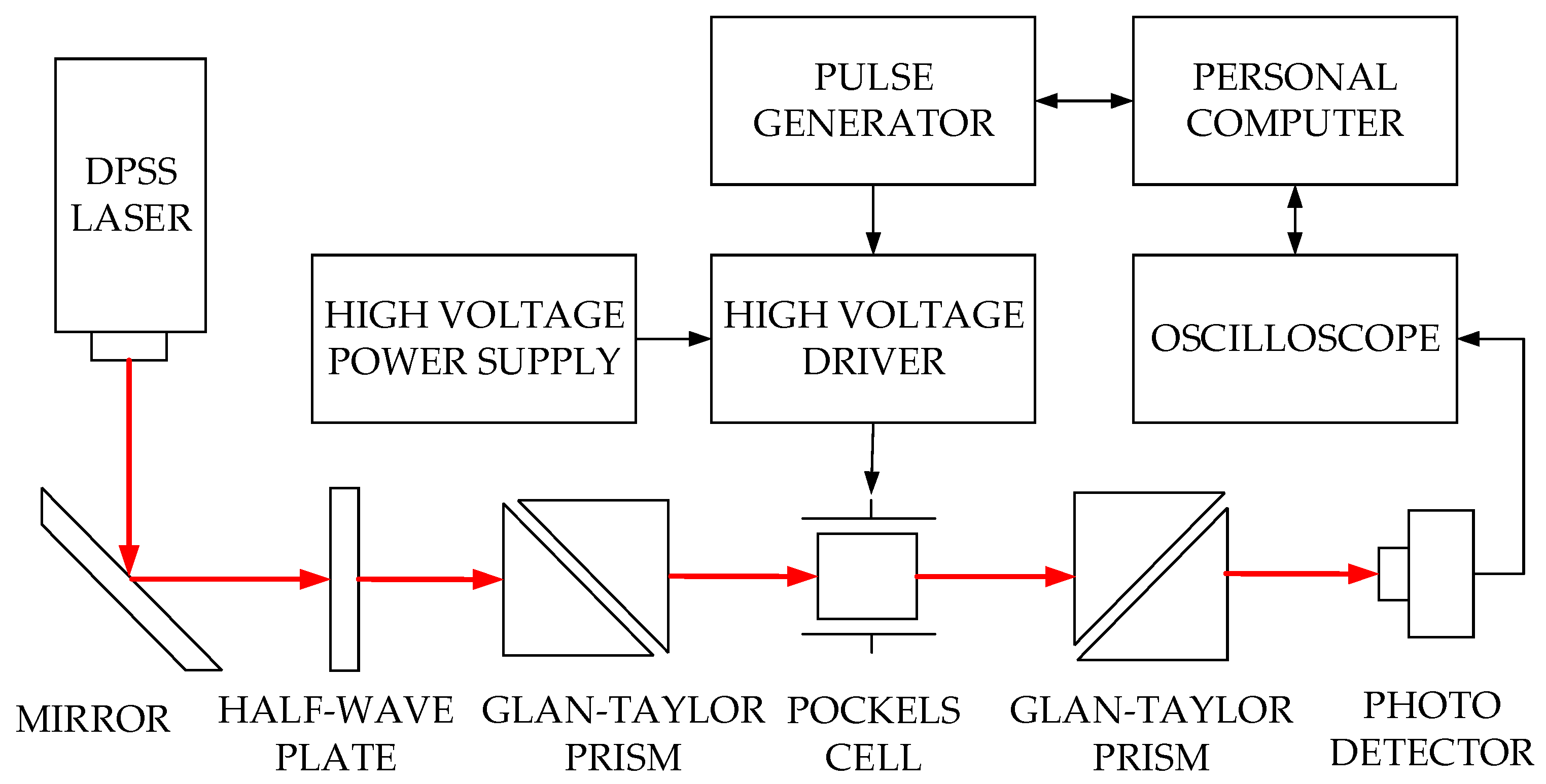
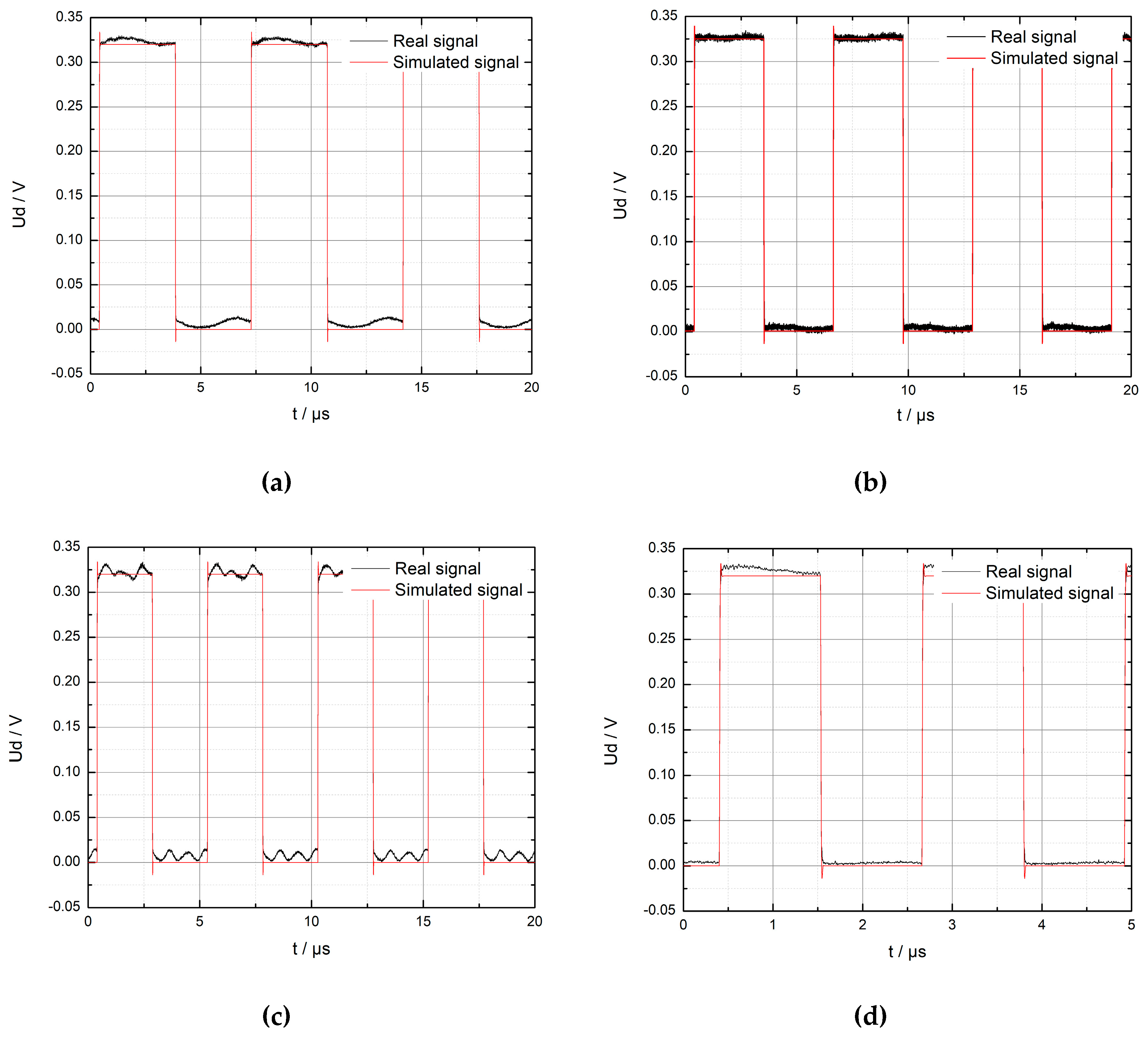

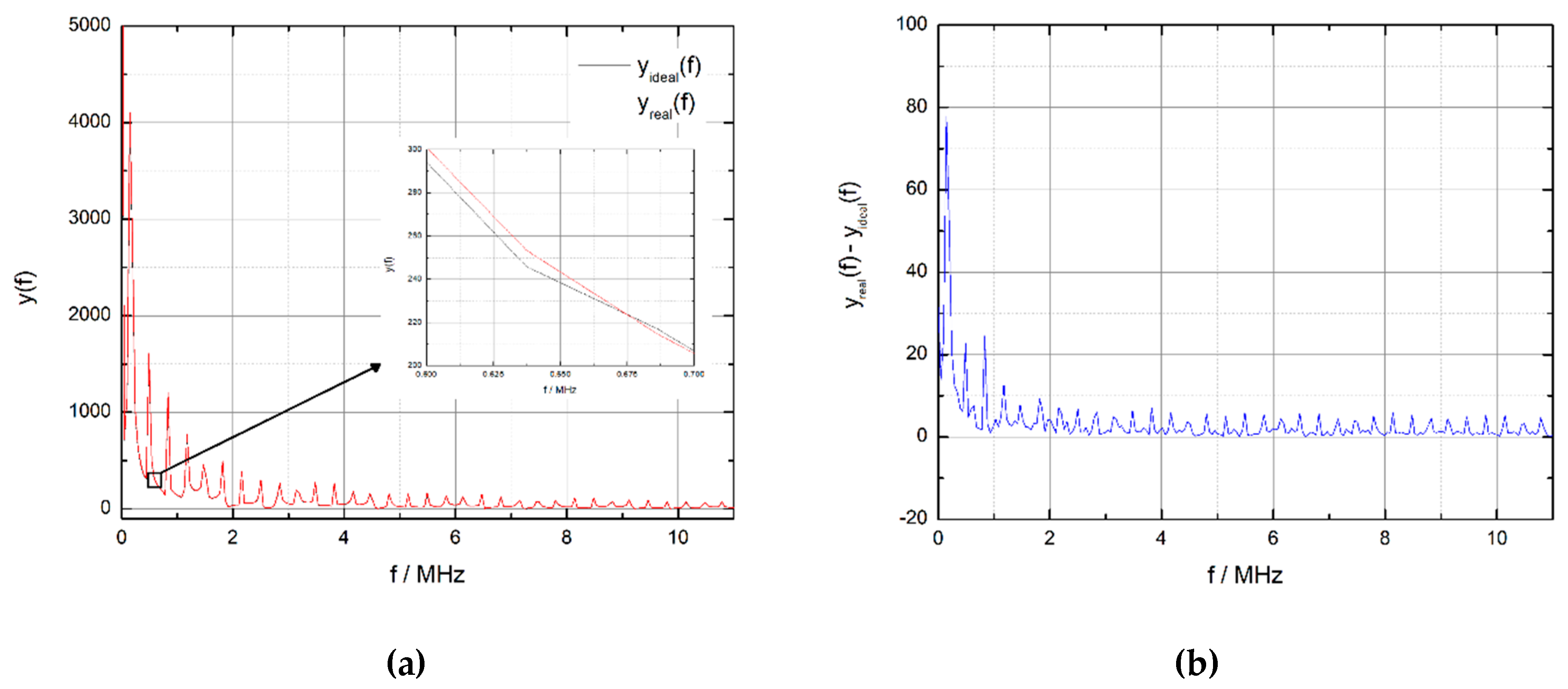
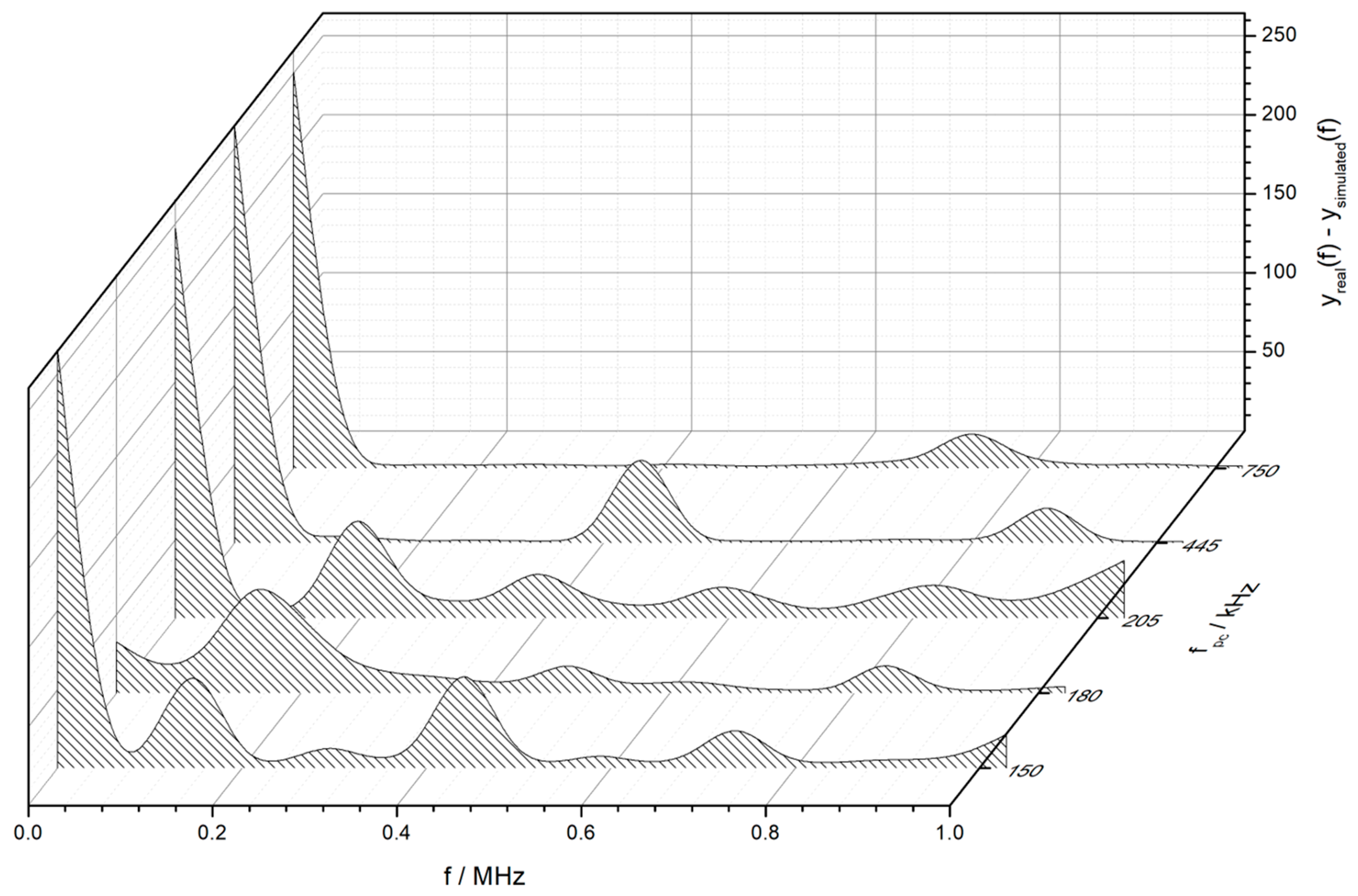
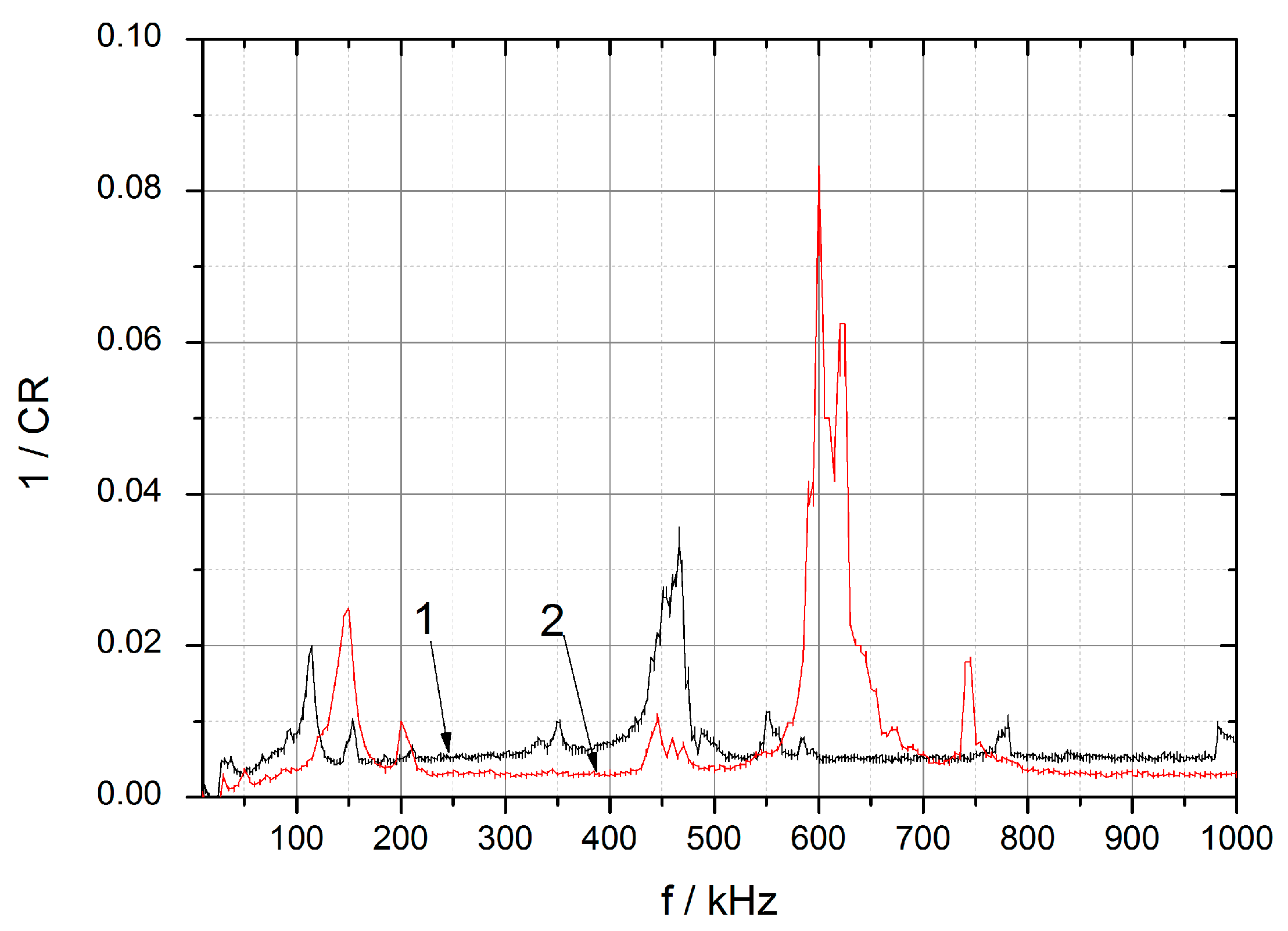
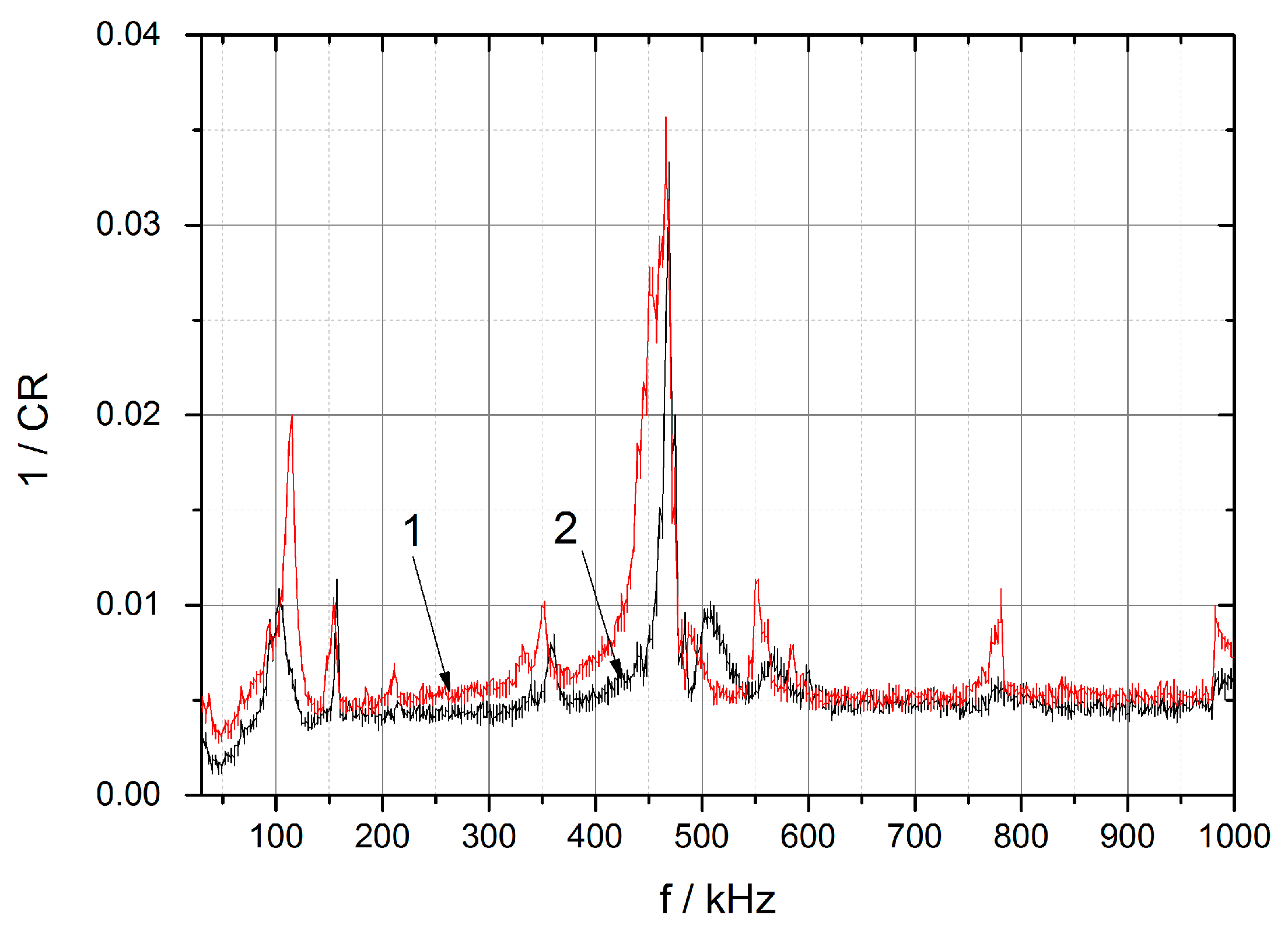
© 2019 by the authors. Licensee MDPI, Basel, Switzerland. This article is an open access article distributed under the terms and conditions of the Creative Commons Attribution (CC BY) license (http://creativecommons.org/licenses/by/4.0/).
Share and Cite
Sinkevicius, G.; Baskys, A. Investigation of Piezoelectric Ringing Frequency Response of Beta Barium Borate Crystals. Crystals 2019, 9, 49. https://doi.org/10.3390/cryst9010049
Sinkevicius G, Baskys A. Investigation of Piezoelectric Ringing Frequency Response of Beta Barium Borate Crystals. Crystals. 2019; 9(1):49. https://doi.org/10.3390/cryst9010049
Chicago/Turabian StyleSinkevicius, Giedrius, and Algirdas Baskys. 2019. "Investigation of Piezoelectric Ringing Frequency Response of Beta Barium Borate Crystals" Crystals 9, no. 1: 49. https://doi.org/10.3390/cryst9010049
APA StyleSinkevicius, G., & Baskys, A. (2019). Investigation of Piezoelectric Ringing Frequency Response of Beta Barium Borate Crystals. Crystals, 9(1), 49. https://doi.org/10.3390/cryst9010049




